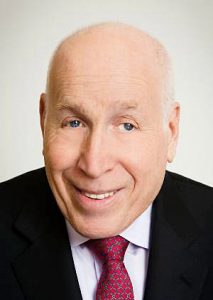Larry Hite – Respecting Risk

Today’s post is a profile of Guru investor Larry Hite, who appears in Jack Schwager’s original Market Wizards. His chapter is called Respecting Risk
Larry Hite
Larry Hite started out as an actor and screenwriter, before becoming a rock promoter.
He had developed an interest in the markets (specifically, trading commodities on margin) whilst in college.
- In 1968 he switched to stock-broking, and then a few years later he became a commodities broker.
After a decade he started his own firm – Mint Investment Management.
- He hire a statistician and a computer scientist to provide the mathematical foundation for his firm’s approach.
Hite’s aim was to target the best growth rate consistent with tight risk control.
Hite appears in Jack Schwager’s original Market Wizards.
- His chapter is called Respecting Risk.
Performance
From 1981 to 1988, Mint averaged returns of 30% pa, with a range from -13% to +60%.
- The firm began with $2M but by the time of Schwager’s interview they were managing more than $800M.
The extra money did not impact performance, and Hite’s target was to reach $2 bn.
Systems
Hite has complete faith in his systems, and is very quotable.
I don’t trade for excitement, I trade to win. It may be very dull, but it is also very lucrative.
I found that the origin of the term blue-chip was the color of the most expensive gambling chip in Monte Carlo. So I threw away my copy of Graham and Dodd and bought a book called Beat the Dealer.
I had the idea that successful investment was really a matter of odds, and if you could compute the odds, you could find and test methods that could beat the market.
The markets are inefficient. I have noticed that everyone who has ever told me that the markets are efficient is poor.
People don’t change. If you use sufficiently rigorous methods to avoid hindsight, you can test a system and see how it would have done in the past and get a fairly good idea of how that system will perform in the future.
You may not know what will happen tomorrow, you can have a very good idea what will happen over the long run.
Insurance is a perfect analogy. Take one sixty-year-old guy and you have absolutely no idea what the odds are that he will be alive one year later. However, if you take 100,000 sixty-year-olds, you can get an excellent estimate of how many of them will be alive.
We let the law of large numbers work for us.
Risk
If you do not manage the risk, eventually they will carry you out.
Never risk more than 1 percent of total equity on any trade.
If you don’t bet, you can’t win. If you lose all your chips, you can’t bet.
If you never bet your lifestyle, nothing bad will ever happen to you. While you can’t quantify reward, you can quantify risk.
If you trade across the board, control your risk, and go with the trend, it just has to work.
We always follow the trends and we never deviate from our methods. The trades are all the same.
If the odds on a bet are 50/50 and the payoff is $2 versus a $1 risk, that is a good bet even if you lose. If you do enough of those trades or bets, eventually you have to come out ahead.
We diversify in two ways. We trade a lot of markets, and use a lot of different systems.
We track volatility. When the volatility of a market becomes so great that it adversely skews the expected return/risk ratio, we will stop trading that market.
We look at volatility for different time periods in the range from 10 days to 100 days.
If we are stopped out for money-management reasons [rather than from a sell signal], we don’t get back in until the market makes a new high.
Players
In trading, you can define three categories of players: the trade, the floor, and the speculator.
The trade has the best product knowledge and the best ways of getting out of positions. If they are caught in a bad position in the futures markets, they can offset their risk in the cash market.
The floor has the advantage of speed. You can never be faster than the floor.
The speculator has the advantage of not having to play. He can bet only when the odds are in his favor.
Optimisation
We are not looking for the optimum method; we are looking for the hardiest method.
It is incredible how rich you can get by not being perfect.
Indicators
Overbought / oversold indicators don’t seem to prove out in testing.
If a market doesn’t respond to important news in the way that it should, it is telling you something very important.
Ed Seykota taught me that when a market makes a historic high, it is telling you something. The mere fact that the price is at a new high tells you something has changed.
Conclusions
This is one of those frustrating chapters where the person being interviewed is interesting and engaging, but where we don’t learn too much about their methodology.
- System traders understandably don’t like to reveal the details of their system.
What we have learned is:
- Hite is certain that the markets are inefficient.
- You need a system that shifts the odds in your favour.
- For Hite, this means following the trend.
- And you need to control risk.
- Hite risks no more than 1% on each trade.
- He also diversifies across many markets (close to 60 in number) and many systems.
- And he monitors volatility in order to suspend trading when risk is too high.
Until next time.



















